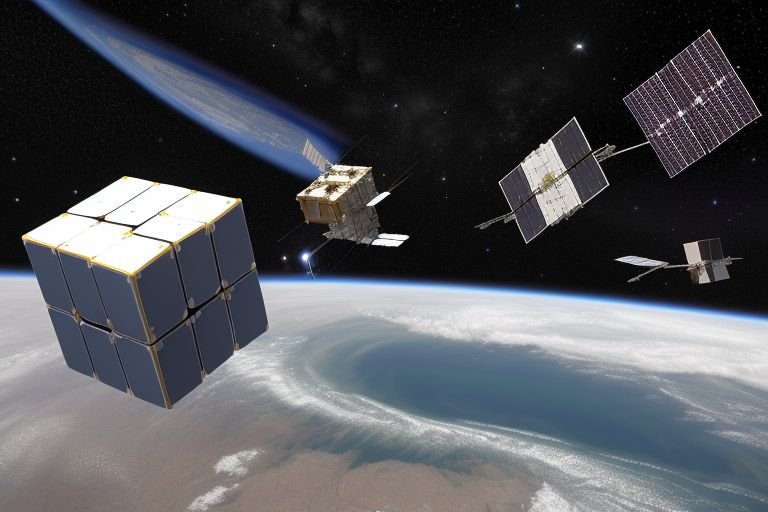CubeSats, the compact cubes of technology that are revolutionizing access to space, have become instrumental in modern satellite operations. Their small size and cost-effectiveness are democratizing space exploration and research, allowing universities, small enterprises, and developing countries to participate in space missions previously dominated by major space agencies with hefty budgets.
What are CubeSats?
CubeSats are miniature satellites that typically have a volume of exactly one liter (10cm x 10cm x 10cm), weigh no more than 1.33 kilograms, and are scalable in ‘units’ or ‘U’s depending on mission requirements. Initially developed in 1999 by California Polytechnic State University and Stanford University, CubeSats were designed to enable cost-effective research and technology applications in space.
Core Components
- Structure: Made from lightweight yet durable materials, the structure houses all the satellite’s components.
- Payload: This includes all the scientific instruments and technology demonstrators needed for the mission’s objectives.
- Communication: Antennas and transceivers allow the CubeSat to send data back to Earth and receive commands.
- Power: Solar panels and batteries provide and store energy.
- Propulsion: Some CubeSats include propulsion systems, though many are designed to drift freely after deployment.
Applications of CubeSats
The applications of CubeSats are diverse, ranging from educational purposes to advanced scientific research and commercial use:
- Educational: Universities and colleges use CubeSats as a practical educational tool for students to design, build, and operate space missions.
- Scientific Research: Scientists utilize CubeSats for a variety of research purposes including Earth observation, astronomy, and even experimental biology.
- Technology Testing: Companies test new space technologies, such as propulsion systems and radiation-hardened electronics, on CubeSats before scaling them up for larger satellites or missions.
- Commercial: Private firms deploy CubeSats for a range of commercial applications, including telecommunications and Earth imaging.
Technological Innovations and Advancements
The advancement of CubeSat technology has led to significant innovations:
- Miniaturization of Technology: Components such as sensors, cameras, and processors have been made smaller and more efficient, fitting into the compact CubeSat form factor.
- Increased Accessibility: The standardized design and reduced cost of CubeSats have lowered the barrier to entry for space missions, making satellite technology accessible to a broader range of institutions and startups.
- Rapid Development Cycles: CubeSats can be developed and launched within months, unlike traditional satellites that often require years.
Challenges and Future Prospects
While CubeSats are a booming sector of the aerospace industry, they face specific challenges:
- Space Debris: The increasing number of CubeSats and other small satellites in orbit raises concerns about space debris and the potential for collisions.
- Communication Limitations: The small size of CubeSats limits the size and power of their communication systems, sometimes restricting data transmission rates.
- Regulatory and Coordination Challenges: As the number of CubeSat launches increases, coordinating orbits and managing frequency assignments become more complex.
Conclusion
CubeSats are transforming the landscape of space exploration and utilization. Their small size, reduced cost, and versatility make them ideal for a wide range of applications, from scientific research to commercial ventures. As technology continues to evolve, the impact of CubeSats on the global space industry is expected to grow, making these tiny satellites a vital part of the future of space operations.























+ There are no comments
Add yours